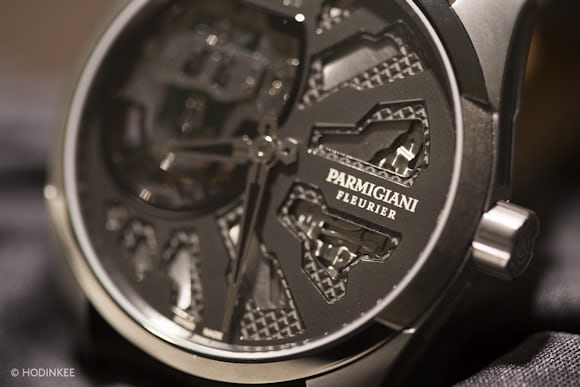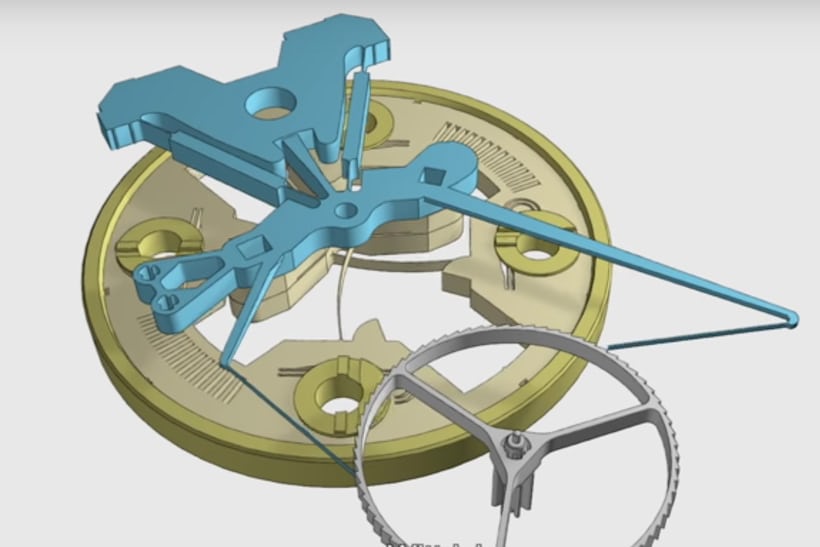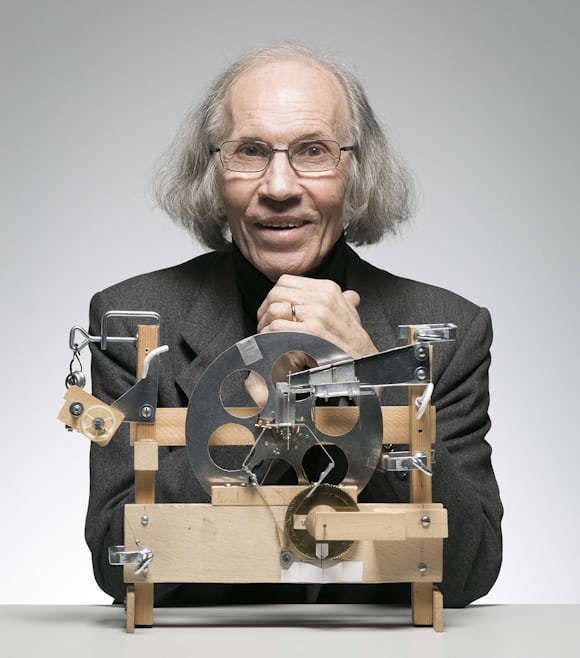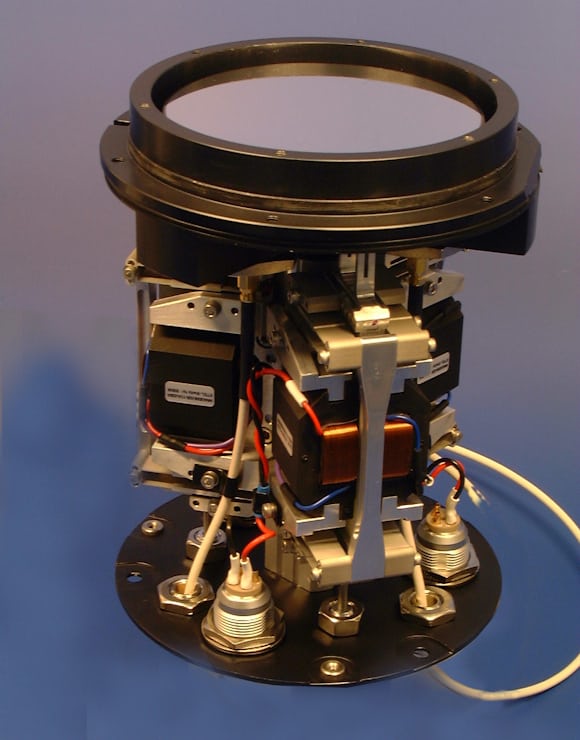Last SIHH, one of the most interesting developments in mechanical horology in many years was shown by Parmigiani Fleurier: a concept watch dubbed "Senfine" (Esperanto for "eternally") with an exotic new high frequency escapement that offered a 70-day power reserve in a watch, as we reported at the time, about the size of an Omega Speedmaster. In this series, we'll look at what inspired the escapement, and how it eventually found its way into a working watch. The escapement has no real parallel in modern watchmaking, and the story of how it came to be is one that begins with a retired physicist with no real background in watchmaking – but who had, as they say, a bit of time on his hands.

First let's take a quick look back at the escapement and review how it works. The escapement, as we reported here, has at its heart a balance mounted on two x-shaped blade springs. There's no conventional balance spring, and the two blade springs provide the energy to return the balance to the neutral position when it is impulsed. Below you can see, in yellow, the balance and blade springs; mounted directly onto the balance is the lever, which has two very thin, flexible, blade-like teeth that alternately lock the escape wheel.

As we mentioned in our launch coverage of the Senfine concept watch, there's really nothing like this escapement in modern horology. The closest thing I've seen to the Genequand oscillator is John Harrison's "grasshopper" escapement, and interestingly enough, Pierre Genequand, according to Parmigiani Fleurier, was not aware of the grasshopper escapement when he got the idea for his escapement. Instead, the Genequand oscillator arose out of Pierre Genequand's interest in flexible silicon components for micro-mechanical applications, and for the aerospace industry – and from the coincidental interest on the part of the watch industry in developing silicon components during Genequand's tenure at CSEM (the Swiss Center for Electronics and Microtechnology).

Genequand took a doctorate in physics from EPFL (École polytechnique fédérale de Lausanne, the Swiss Federal Institute of Technology Lausanne) and spent the first part of his career at the Geneva offices of a company called Battelle. Battelle is a non-profit research and development organization that concentrates on technology solutions for external clients (the firm's clients come from a wide range of backgrounds, which include "national security, health and life sciences, and energy and environmental industries"). That environment encouraged a generalist perspective, as well as the ability to synthesize concepts from disparate disciplines in order to come up with optimum solutions.
In 1982, Genequand began working for the Fondation Suisse de Recherche en Microtechnique (Swiss Foundation of Microtechnological Research, or FSRM). His most important project, and one that would inform his later horological work, was on the development of a micro-shutter printer, which required the development of flexible silicon components. In 1984, Genequand was transferred to CSEM, where he continued his work on such components for a variety of applications. One of the results of his work was a mount for a mirror to be used in a laser communications system in satellites, with a precision allowing optical communications at distances up to 20,000 km. The technology was dubbed "FlexTech."

At the time, the Swiss watch industry was still in the throes of the Quartz Crisis, and Genequand wasn't working on horological solutions at all. However, CSEM was originally formed from the merger of three companies, two of which were focused on watchmaking: the Centre Electronique Horloger (CEH), the Fondation Suisse pour la Recherche en Microtechnique (FSRM), and the Laboratoire Suisse de Recherches Horlogères (LSRH) – and it was thanks to the incorporation of CEH and LSRH that Genequand first became interested in early efforts to create silicon watch components. Though he had no formal training in watchmaking, his early career at Battelle had given him an inclination for independent research, and during the late 1990s, he began serious research into the basic principles of escapements – which continued after his retirement in 2002. (He actually went so far as to photocopy two classic works on horology – "Théorie Générale de l’Horlogerie" by Defossez, and "Les Echappements" by Huguenin, Gauchat, and M. Guye – which he studied intensively to put his escapement work on a solid theoretical foundation.) The major question was, could low-energy-consumption, flexible silicon components be used to completely replace the (relatively) inefficient pivots and sliding surfaces of the Swiss lever, which at best only transmits about 40% of the energy from the going train to the balance?

Above is the original prototype for the Genequand oscillator, and it contains, essentially, all the critical elements that can be found in the Senfine concept watch. The very large wheel at the center is the balance; the two armed levers can clearly be seen mounted on it, and as well, you can see the escape wheel. Of course, one big difference between the prototype model and the actual watch is that the former is weight driven – by a few hanging eyebolts, which you can see on the left. The basic principle is there, however: a flexible escapement, and the absence of the usual energy-consuming, friction-creating elements that limit the efficiency of the lever. One issue with the Genequand oscillator, however, is that the escapement is more or less in constant contact with the going train, unlike the lever escapement (or detent escapement), which means that the balance is as well. Escapements with this characteristic are called frictional rest escapements, and they tend to be very sensitive to variations in power flow. To counter this tendency, the Genequand oscillator incorporates an isochronism corrector, to ensure balance frequency at the beginning and end of the power reserve are equal – an essential feature of a spring powered watch, especially one with a long power reserve, and which in many long-running watches in the past and present, is ensured by devices like a fusée or a remontoire d'egalité.
Stay tuned for our next installment on the development of the Senfine concept watch, coming up shortly in this series.
No comments:
Post a Comment